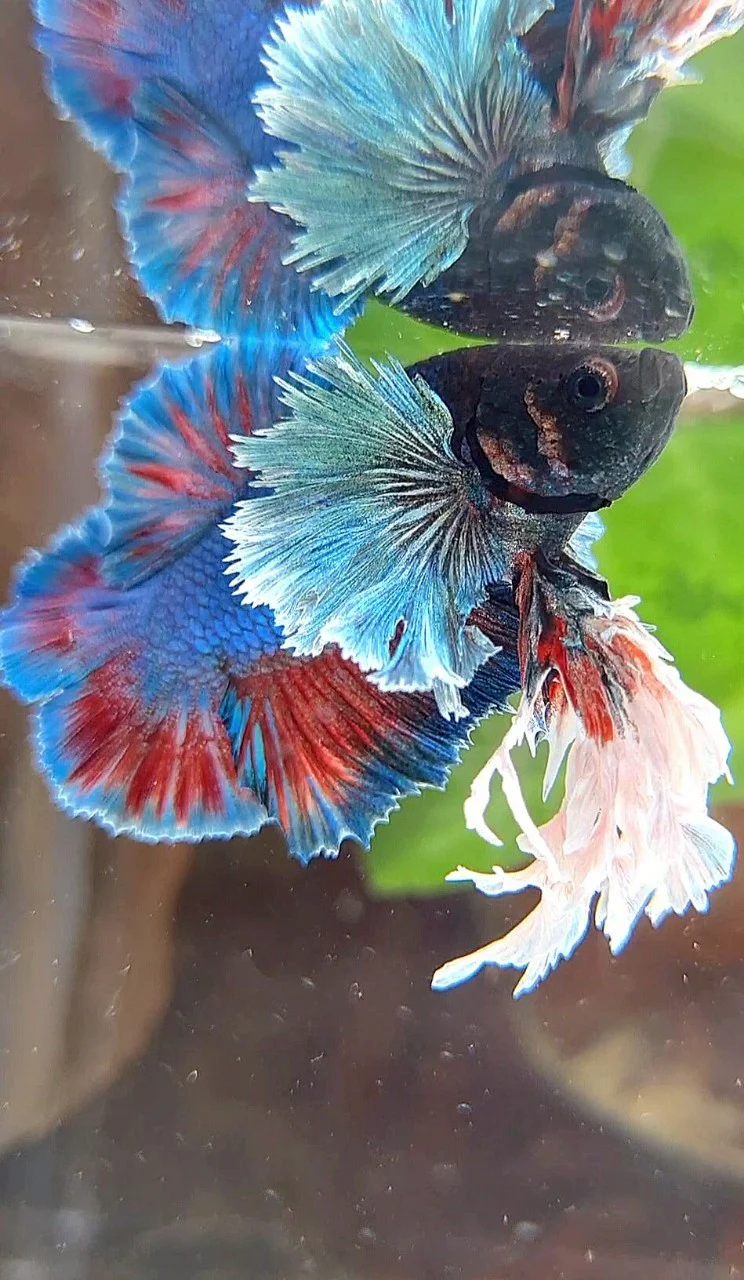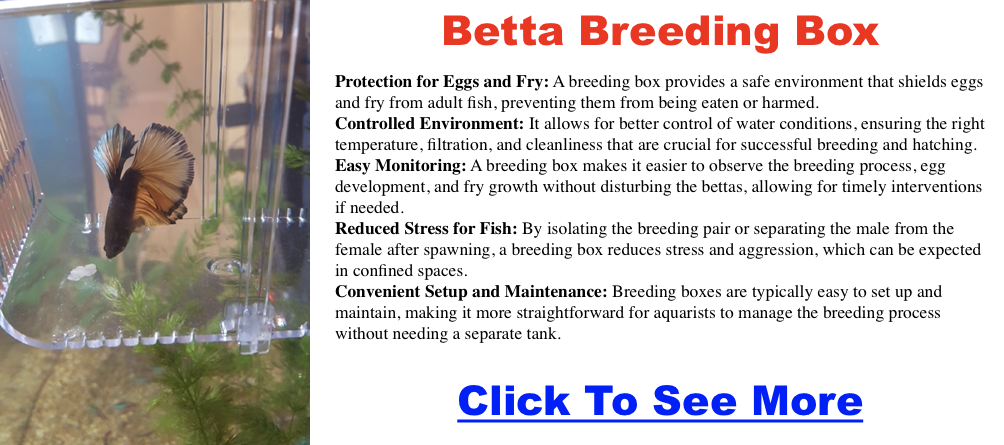Betta Fish Eggs 101: Size, Appearance, Hatching Time & More
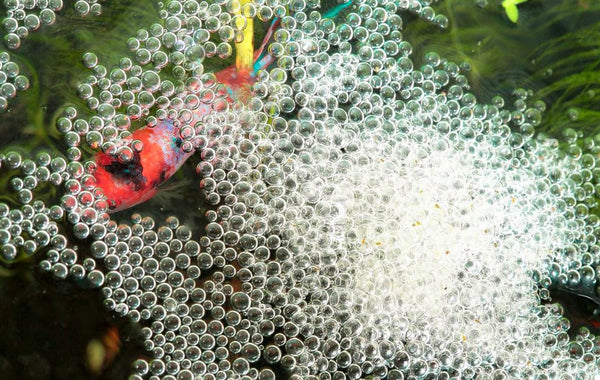
Credit: Buce Plant
Breeding betta fish can be one of the most rewarding experiences for aquarists, combining the joy of witnessing unique behaviors with the thrill of raising fry into healthy adults. However, it’s also a delicate process that requires careful preparation. This guide will walk you through everything you need to know, from understanding betta fish breeding behaviors to raising the next generation.
Click here to buy beautiful betta fish – stunning & healthy
Understanding the Difference Between Male and Female Betta Fish
If you’re just starting with bettas, knowing the differences between males and females is key to a successful breeding experience.
Physical Traits
- Fins and Colors:
- Males have long, flowing fins and vivid colors, often appearing as though they’ve stepped out of a painting. Females, while beautiful, have shorter fins and tend to display more muted tones like pale blue, brown, or soft pink.
- Size:
- Males are slightly larger and have a more elongated body shape compared to the smaller, streamlined females.
Egg Spot:
- Female bettas have a tiny white dot near their ventral fins called an “ovipositor” or egg spot, where eggs are released during spawning.
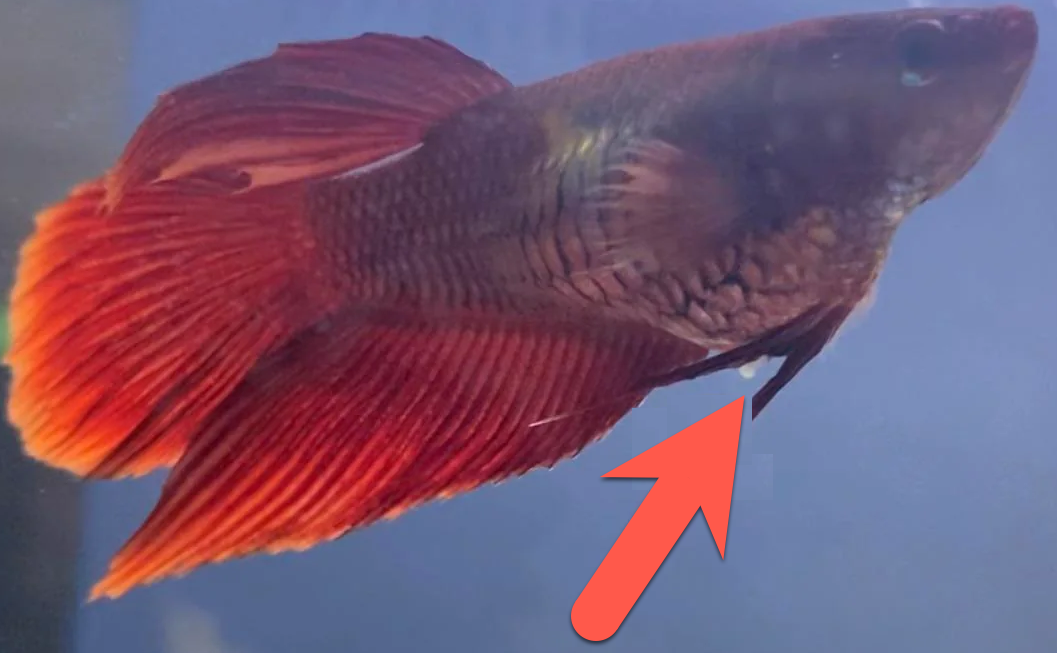
Egg spot shown here
- Size and Age: Larger, mature females tend to lay more eggs. A young betta (2-3 months old) may be sexually mature, but waiting until she’s full-grown (around 8 months to a year) yields the healthiest, biggest spawns.
- Conditioning: Properly conditioning the pair with a high-protein diet boosts egg production. Spawns can range from 30 to an astonishing 500 eggs, though smaller batches are common for less-experienced pairs or mouthbrooders (who typically lay 10-20 eggs).
Behavioral Traits
- Aggression:
- Male bettas are fiercely territorial and should never be housed together, as they will fight to establish dominance. Females, while occasionally territorial, are less aggressive and can sometimes coexist in groups called sororities if the environment is managed properly.
- Breeding Roles:
- Male bettas build bubble nests and care for the eggs during breeding. Females simply lay the eggs and should be removed afterward to prevent conflict.
Betta Breeding Basics
Betta fish fall into two main breeding categories: bubble-nest builders and mouthbrooders.
Bubble-Nest Builders:
- Commonly bred species like Betta splendens fall into this category. Males create bubble nests on the water’s surface, where they place fertilized eggs for incubation.
Mouthbrooders:
- Less common, mouthbrooders like Betta macrostoma incubate eggs in the male’s mouth for 7-10 days. This adaptation suits flowing water environments where bubble nests are impractical.
| Feature | Bubble-Nesters | Mouthbrooders |
|---|---|---|
| Environment | Still water | Flowing streams |
| Egg Care | Bubble nests on the surface | Incubated in the male’s mouth |
| Incubation Time | 24-48 hours | 7-10 days |
Preparing for Breeding
Proper preparation ensures your bettas are ready to spawn and increases the chances of healthy fry.
Setting Up the Tank
- Tank Size: A 2.5 to 10-gallon tank works best, filled to 5-6 inches.
- Temperature: Maintain 80-82°F with a reliable heater.
- Filter: Use a sponge filter for clean water without strong currents.
- Decorations: Add floating plants like Java Moss or Indian Almond Leaves for cover and bubble nest support.
- Dividers: Use a tank divider to separate the male and female until they’re ready to spawn.
Conditioning the Pair
- Diet: Feed both fish high-protein foods like bloodworms and brine shrimp for 3-4 days before introducing them.
- Isolation: Keep the pair in separate tanks or a divided tank to reduce stress and trigger breeding instincts.
Choosing the Right Pair
- Health: Select vibrant, healthy fish with no signs of illness.
- Genetics: To avoid health issues, do not breed closely related bettas.
- Backup Fish: Have extra males and females in case the initial pair doesn’t bond.
The Breeding Process
Bubble-Nesters
- The male betta builds a bubble nest on the water’s surface.
- Once the nest is complete, introduce the female and observe closely.
- The pair will perform a mating “dance,” during which the male fertilizes the eggs.
- The male betta collects the eggs and places them in the nest.
- Remove the female after spawning to avoid aggression.
Mouthbrooders
- Spawning usually occurs in secluded areas, like near plants or pots.
- The male collects fertilized eggs in his mouth and incubates them for 7-10 days.
- Avoid disturbing the male during incubation to prevent him from swallowing the eggs.
How to Know if Betta Fish Eggs Are Fertilized
- Look for Growth: Fertile eggs show signs of development, such as those telltale black dots and a visible embryo. Close to hatching, you may even see a tiny fish inside with a white yolk sac.
- Unfertilized Eggs: These remain white or become fuzzy with fungus – a sign they won’t hatch. The male betta will typically eat unfertilized or damaged eggs.
Caring for Eggs and Fry
Concentrate on providing the appropriate food and environment for the fry to thrive. Click to learn more about caring for betta fry care. If you already have baby bettas that have grown past the fry stag, we have an article on caring for baby betta fish.
What Do Fertilized Eggs Look Like?
Fertilized betta eggs are tiny, round, and translucent, often white or pale yellow. You may notice small black dots inside as the embryos develop.

Egg and Fry Care Tips
- Lighting: Provide a dim light to help the male monitor the eggs.
- Temperature: Keep the water warm (80-82°F) to encourage faster development.
- Hatching Time: Eggs hatch within 24-48 hours for bubble-nesters and up to 10 days for mouthbrooders.
- Removing the Male: Once fry become free-swimming (2-3 days after hatching), remove the male to prevent him from eating them.
Feeding Fry
- Start with tiny live foods like infusoria or vinegar eels.
- As they grow, transition to baby brine shrimp and micro-worms.
- Feed 3-5 times a day in small amounts to avoid water pollution.
Growth Milestones for Fry
| Age | Development Stage |
|---|---|
| 2-3 days | Free-swimming |
| 1-2 weeks | Developing fins |
| 3-4 weeks | Colors begin to show |
| 6-8 weeks | Genders become distinguishable |
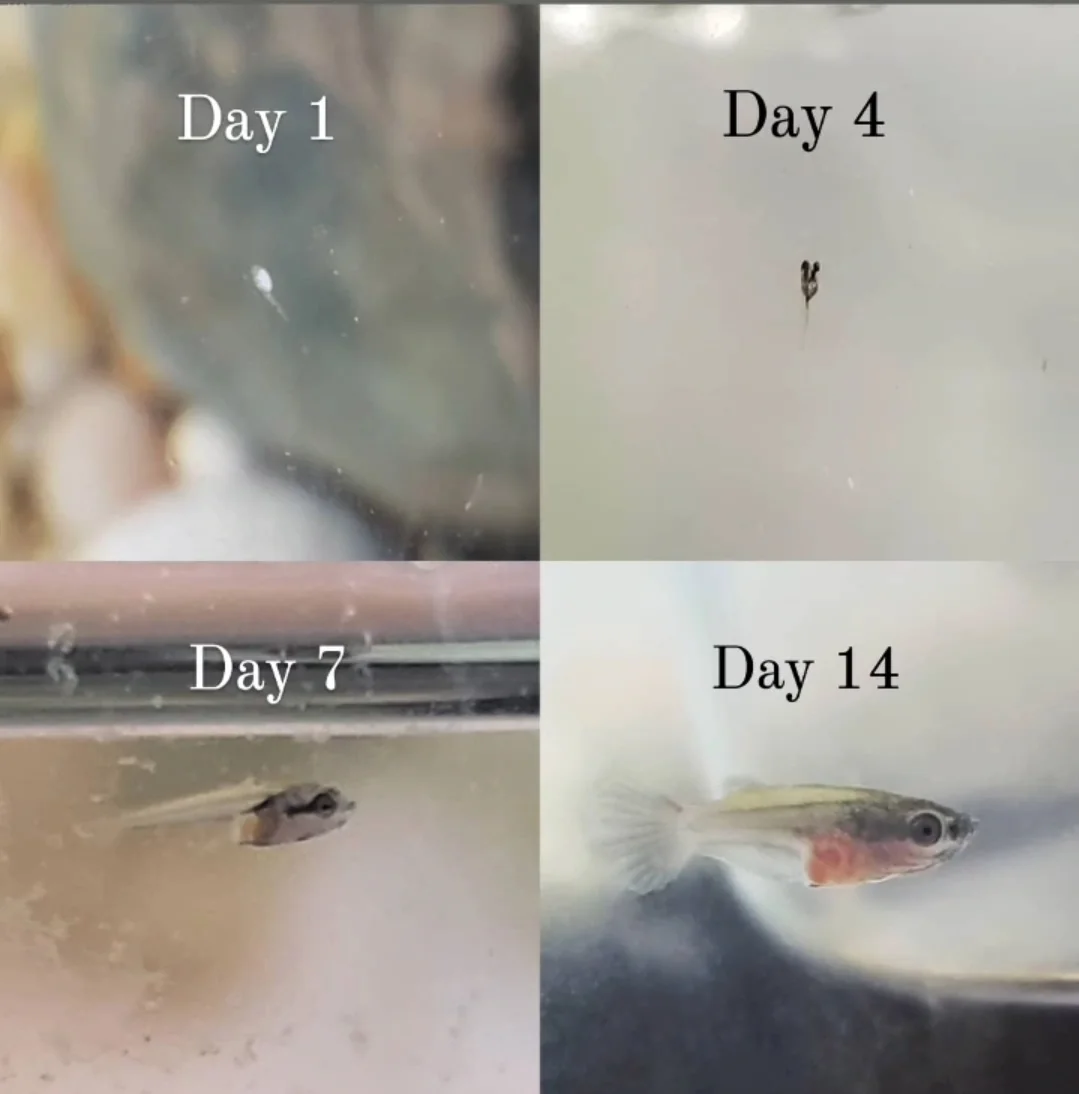
Common Challenges and Troubleshooting
Aggression Between Male and Female
If the male is overly aggressive, separate the pair with a divider and reintroduce them gradually.
Unfertilized Eggs
Unfertilized eggs appear white or fuzzy and should be removed to prevent fungal growth.
Male Eating Fry
If the male eats fry, remove him immediately once the fry are free-swimming.
Water Quality
Perform small daily water changes (10-20%) to maintain cleanliness and remove waste.
Conclusion
Breeding bettas requires careful preparation, patience, and close monitoring, but the rewards are worth it. From the intricate spawning process to watching tiny fry grow into vibrant bettas, breeding these fish can be an incredibly fulfilling journey. Follow this guide to give your bettas the best chance at a successful spawn, and don’t hesitate to consult additional resources on betta care as you gain experience.
